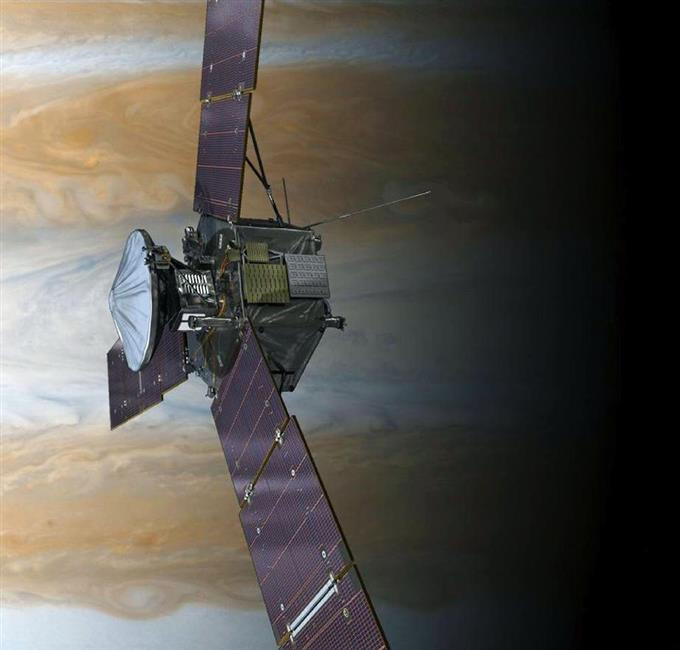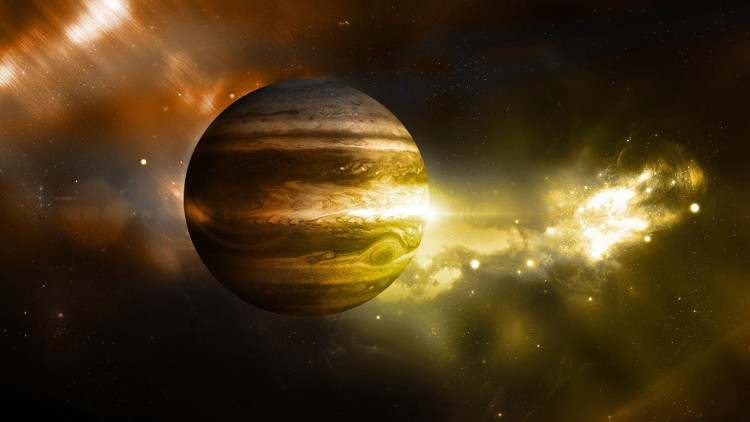For the first time, humans can discover Jupiter's deepest mystery
All thanks to a NASA project from 2011, which has allowed people to approach Jupiter at the closest distance ever.
On July 4, 2016, mankind will approach Jupiter at the closest distance ever. All thanks to a satellite named Juno - launched by NASA in 2011 with the aim of approaching and studying Jupiter.

NASA Juno satellites started in 2011.
And if exactly what NASA anticipated, Juno will change the whole view of solar system physics.
This will be the first opportunity so far that humans can deepen the study of Jupiter - the largest planet in the solar system. It is known that the planet is 11 times larger than the Earth but has no surface. The entire planet is a giant mass of gas, mainly hydrogen and helium.
Juno satellites are like a giant 3-wing fan, powered by solar energy. This is also the first time NASA sends a solar powered spacecraft to such a far place. As New Horizons ships around Pluto, it must operate with plutonium.

We will look forward to the best pictures Juno brings.
But what will Juno do? The most outstanding is . taking photos . We will look forward to the best pictures Juno brings. However, NASA said that the radiation from the planet will soon ruin Juno's camera lens after only 7 orbits.
Juno will also have to learn about super giant aurora at Jupiter's two poles . These are extremely great aurora, which can span tens of thousands of kilometers.
By using JADE (Jovian Auroral Distributions Experiment) , Juno will perform electrons analysis, and we will know what made that auroral block.

Aurora illustration on Jupiter.
Another Juno mission is to study the planet's gravitational force, thereby determining whether Jupiter doesn't have a solid surface, or that this is just a giant gas sphere.
And finally, Jupiter is so huge, its gravity is also extremely large. Therefore, it retains almost intact everything since the planet was formed.
This means that this planet is like a mysterious ark, which helps us to open our eyes to the time when our solar system was formed.
- Discover the mystery of time difference
- Discover groove secrets Mariana
- 3-hour diary under the deepest Mariana region of film director Titanic
- Discover the mystery that goes on the water
- The creature in the deepest sea of the planet also began to be affected by humans
- How does the 'hell well' deepest on the ground appear?
- Inside the explorer ship, the deepest part of the Earth
- Shoot the deepest volcanic explosion in the sea
- Detecting insects that live the deepest in the ground
- The deepest cave map on Earth dates from the Cretaceous period
- The mystery of 130 massive dead seals in the world's deepest lake
- 10 mysteries about time (I)
 Van Allen's belt and evidence that the Apollo 11 mission to the Moon was myth
Van Allen's belt and evidence that the Apollo 11 mission to the Moon was myth The levels of civilization in the universe (Kardashev scale)
The levels of civilization in the universe (Kardashev scale) Today Mars, the sun and the Earth are aligned
Today Mars, the sun and the Earth are aligned The Amazon owner announced a secret plan to build a space base for thousands of people
The Amazon owner announced a secret plan to build a space base for thousands of people